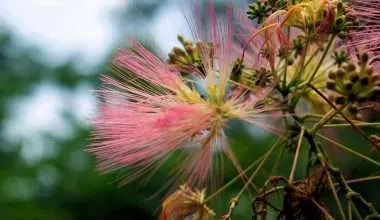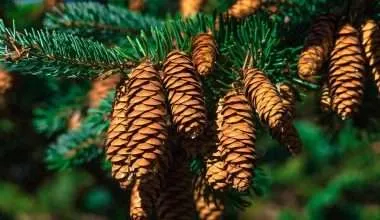Table of Contents Show
Want to know the 15 ways in which your average willows differ from weeping willows?
Native to China, willow trees are some of the most famous trees in the world. Most of that fame, particularly as concerns flowering willows, is because of how willows are intertwined within our cultural standards
In the United States for instance, flowering willows, especially weeping willows, are considered symbols of mourning and engraved on headstones. This was not always the case however.
Many cultures across the world, willows are known for their flexibility and adaptability. This latter quality is evident in the nearly 400 different willow tree species found in the world.
These come in all shapes ranging from low-hanging, ground shrubs to trees that are over 90 feet tall. Belonging to the genus Salix, it’s no wonder that all types of willow trees can be found across the world.
What are the willows?
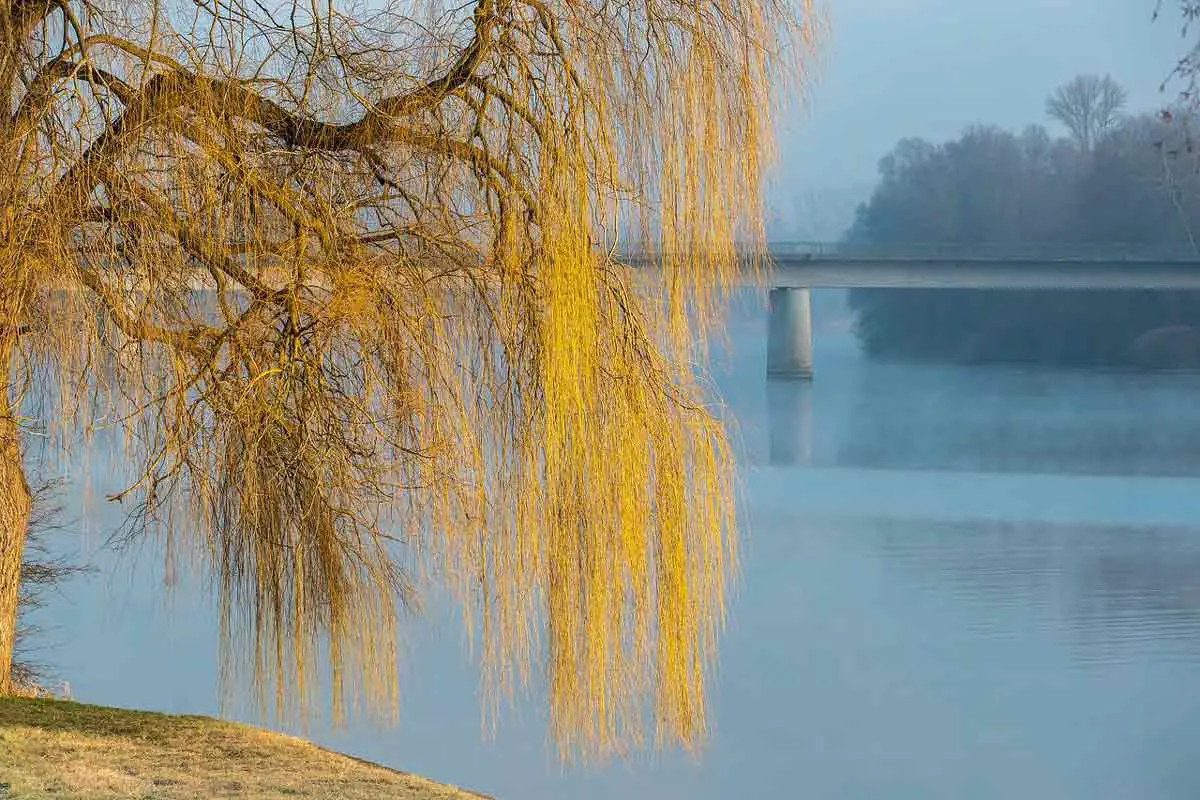
Willows are mostly water-loving trees that tend to grow near an adequate water source. They also prefer moderate to cold temperatures such as those found in the Northern Hemisphere.
However, given the large willow tree variety, and adaptable nature, quite a few trees can grow in drier regions also.
The most famous amongst the willow species is the subspecies known as weeping willow. The tree has long leaves, and when it rains, the water runs down these leaves like tears rolling down. That’s where the idea of associating willows with grief originated from.
Here’s a fun fact that most people do not know. Not every willow is a weeping willow. The weeping willow is in fact a mere subspecies of the willow variety.
Willows vs. Weeping Willows: 15 similarities and differences that set them apart
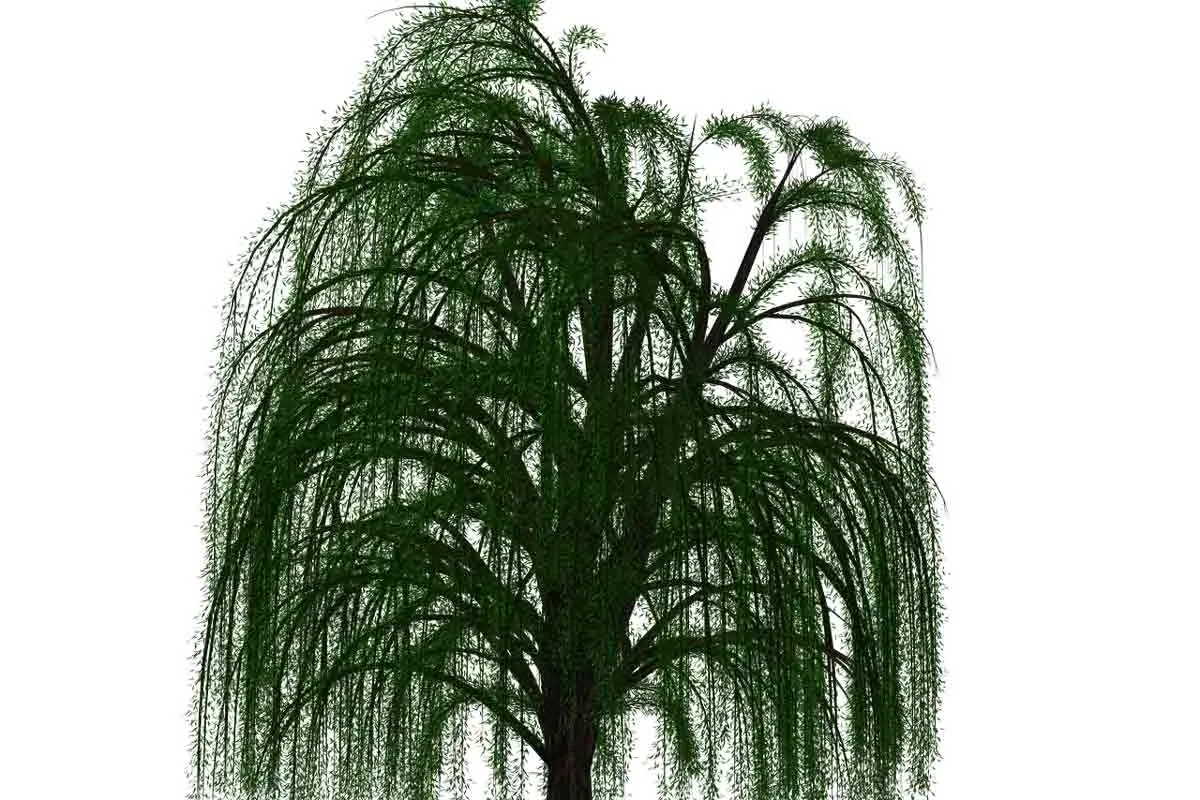
To illustrate our point, here are some of the most common similarities as well as differences between willows and weeping willows.
1. Over 400 species
Willow trees, or the genus Salix as they are called, have over 400 subspecies of willow trees. Of these, the weeping willow is one of the most well-known subspecies in the world.
2. A subspecies in its own right.
Not all willows are weeping willows. The weeping willow belongs to the subspecies, Salix babylonica. One of the most distinctive features of the salix babylonica species, which also gives this tree its name is the shape of its leaf.
The leaf of the weeping willow is long and pointing downwards. During rainy weather, water runs down these long leaves giving the illusion that the tree is ‘weeping tears.’
3. Other types
There are actually quite a few other types of willows, and given that there are over 400 types of willows, they do come in all shapes and sizes.
Some of the other willow types include various other shapes. The vertical , shrub-style and upright growth willows are other common types of willow trees. Naturally, the shape of the actual trees suit their name-types also.
4. Not really the short kind
Most of the pictures you will have seen of willows, both the weeping willow tree and other kinds make it seem as if this is not a tall species of tree. In actual fact, the average height of all willows, weeping and otherwise, is between 30 to 60 feet.
5. The spread is impressive too
It won’t do to just call the willow species a tall tree type and leave it at that. Willows generally have a huge spread area.
The leaf cover for most willows averages between 30 to 40 feet. So, almost all willows are tall and wide.
6. Taste in soil
Willows generally like soil that is wet and boggy in nature. SO if you’re planning on growing willow trees in your backyard, don’t forget to water it often. Ensure it stays hydrated.
Out in the wild, willows, almost unanimously, may be found near water bodies. They generally grow on the banks of rivers and streams.
7. Willows and dry soils are just not a thing
So there are some trees that just love dry soils and don’t require a lot of watering. Not so the willow trees.
For willows, weeping or otherwise, dry soils are a strict no-no. If the soil is not boggy enough to suit the tree’s needs, the tree will not be able to grow properly in them.
8. The root system is quite impressive
The willow trees universally have a very intensely interlaced root system. This forms a grid-like root system allowing willow trees to maintain their grip especially in wet soils where they grow.
Willow trees’ root systems work two ways in this environment. The grid system helps the willow tree grow in wet soils. It also helps prevent soil erosion in these soils also.
9. Depth of the root system
Given how the soil cover is very wet, you’d have expected the roots of the willow trees to go deep underground. That is not the case however.
The root system of the willows is actually quite shallow. Even more surprisingly, the roots can spread to a width that is comparable to the height of the willow tree in question.
10. Willows can tolerate most soils
Despite their affinity for bogged-down soil, the willow trees’ greatest strength is its adaptability. Most willows will be able to tolerate all types of soils, although waterlogged ones are best to grow in.
11. Willow wood is fragile
The wood on the willow trees is very fragile and prone to breaking easily under pressure. This indicates that the bark on the tree is likely not very thick. Too much pressure applied on the willow tree, or any part of its bark, will make it split easily also.
12. Willows can grow in all types of soil
No matter what the type of soil is, willows of all subspecies will be able to grow in it. This means that whether it is loamy, clayey, sandy, acidic or alkaline, the willow tree will be able to grow.
13. Sufficient sunlight will be needed!
All willow trees are very water-intensive and that’s why, like most water-intensive trees, they prefer full sunlight to grow in.
14. They have fuzzy catkins
Some willow trees, such as the pussy willow grow fuzzy catkins just before they bloom in early springtime. The catkins are fuzzy, protective coverings on the flowers of the willow tree.
The appearance of these fuzzy catkins is considered one of the earliest signs of spring in many parts of North America as well as in North Eastern America. In states such as Vermont, willow trees covered with fuzzy catkins are a beautiful sign heralding the coming of spring.
15. Weeping Willows can grow in lightly shaded regions
One of the major differences between your average willow, and the weeping willow trees is in the place they grow. Willows generally need complete exposure to sunlight to be able to grow properly. The weeping willows however, can grow even in areas where there is light shade.
10 types of willow trees
1. Bebb Willow (Salix Bebbiana)
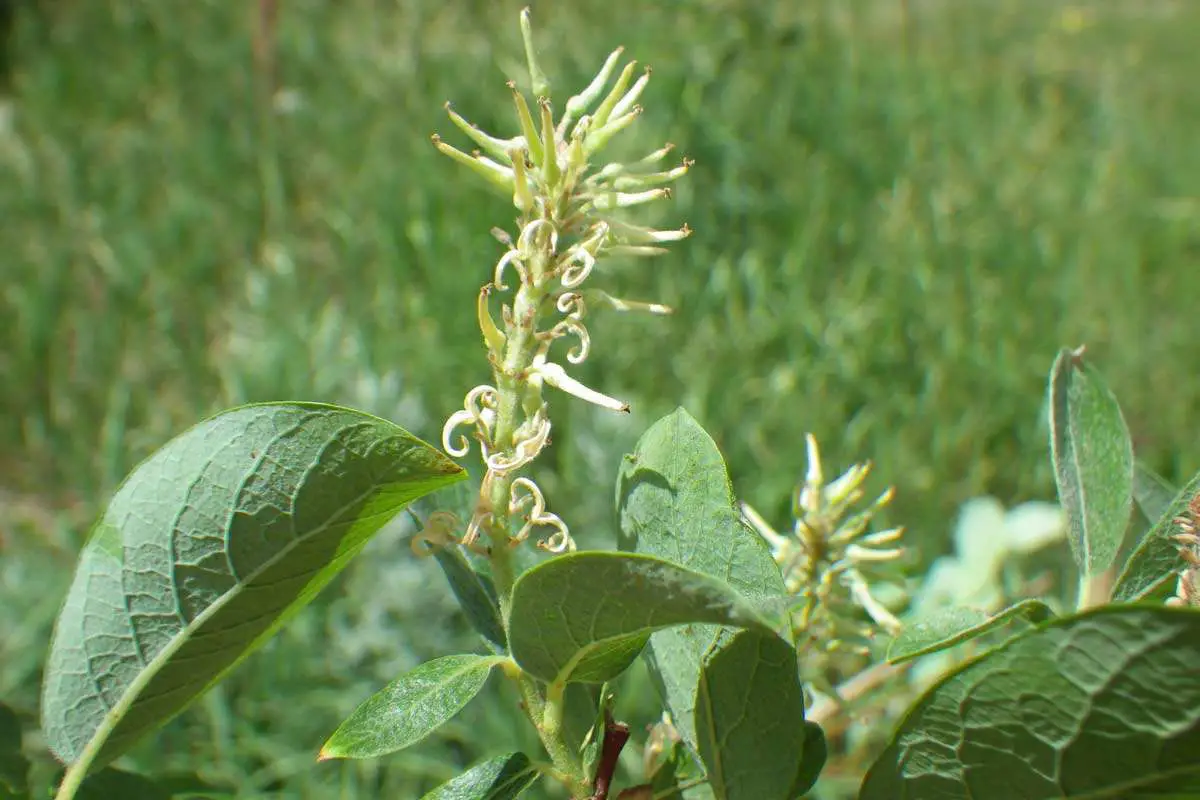
This is a multi-stemmed shrub or small tree found in thickets around streams, lakes, and bogs. It is a major native species in wetlands across North America’s northern tier, although it is rarely found south of zone 4.
Bebb willow wood is frequently used in carving and woodworking. Bebb willow has limited landscape applications beyond woodworking and stabilizing river banks. This is due to the fact that the tree is short-lived. Moreover, the Bebb willow is also susceptible to insect and disease damage. Though once established it does have a fairly high drought resistance.
Beaked willow or Bebb willow has many names. These include gray willow, diamond willow, and long-beaked willow in different parts of the country. Due to this species being known to easily hybridize with other willow species, exact identification can be difficult at times.
2. Corkscrew Willow (Salix Matsudana Tortuosa)
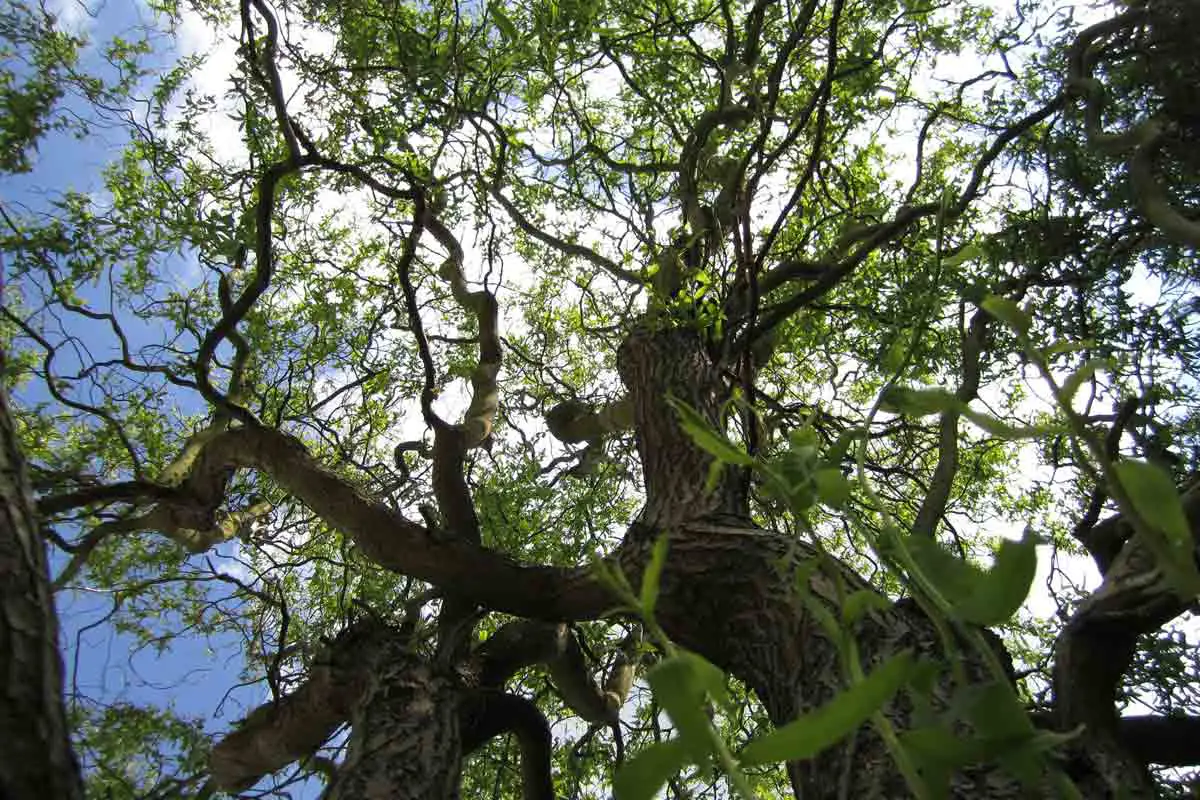
This cultivar is popular because of its twisting branches, which may provide winter interest. While the twisting description of the branches may make this sound like a shrub-like plant variety out of a science fiction movie, it is not. In Fact this is a genuine tree, not a multi-stemmed shrubby plant with insignificant branches.
The Corkscrew willow is often used as a decorative element in flower arrangements and as a bonsai. This plant is also known as curly willow, globe willow, Pekin willow, and twisted willow in its native region. However, more commonly it is referred to as the dragon claw willow tree as well.
Salix matsudana, the species’ form, is surprisingly closely linked to the weeping willow tree. This is the reason that some botanists argue that it is a naturally occurring variety of that tree. One of the most popular varieties, Salix matsudana ‘Tortuosa,’ has twisted branches. Other notable varieties include ‘Golden Curls’ and ‘Scarlet Curls.’
3. Narrow Leaf Willow (Salix Exigua)
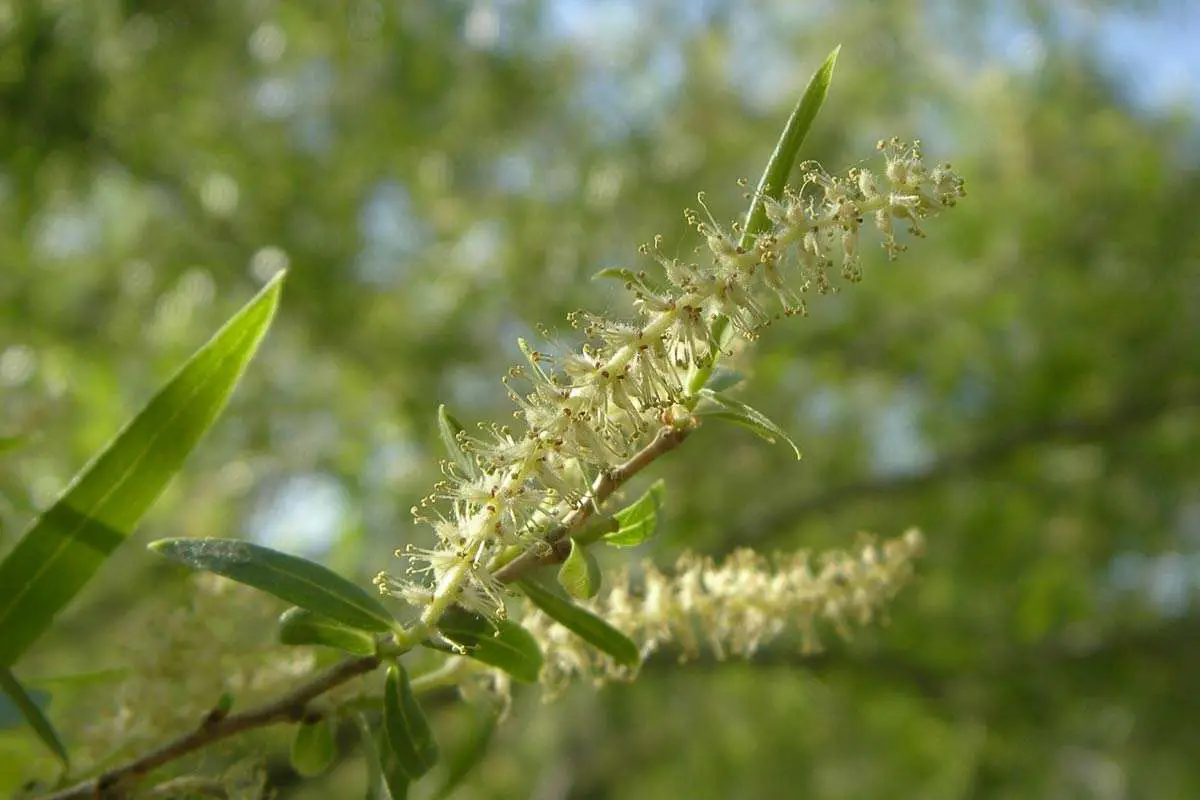
This shrubby willow, sometimes known as the coyote willow, is commonly used to manufacture flexible poles or construction components. This plant’s branches, which have an appealing gray, wrinkled willow bark, are sometimes used to make rustic furniture.
Despite having a relatively wide natural distribution over most of North America, this plant is classified endangered or vulnerable in some sections of the eastern United States. Other popular names for this plant in different areas are dusky willow and gray willow.
It is occasionally planted and the branches trimmed as a tiny aesthetic tree in addition to being used as a source of building materials. It has remarkable endurance for a variety of circumstances. Most prominently having the ability to survive both droughts and prolonged floods.
4. Dappled Willow (Salix Integra Hakuro Nishiki)
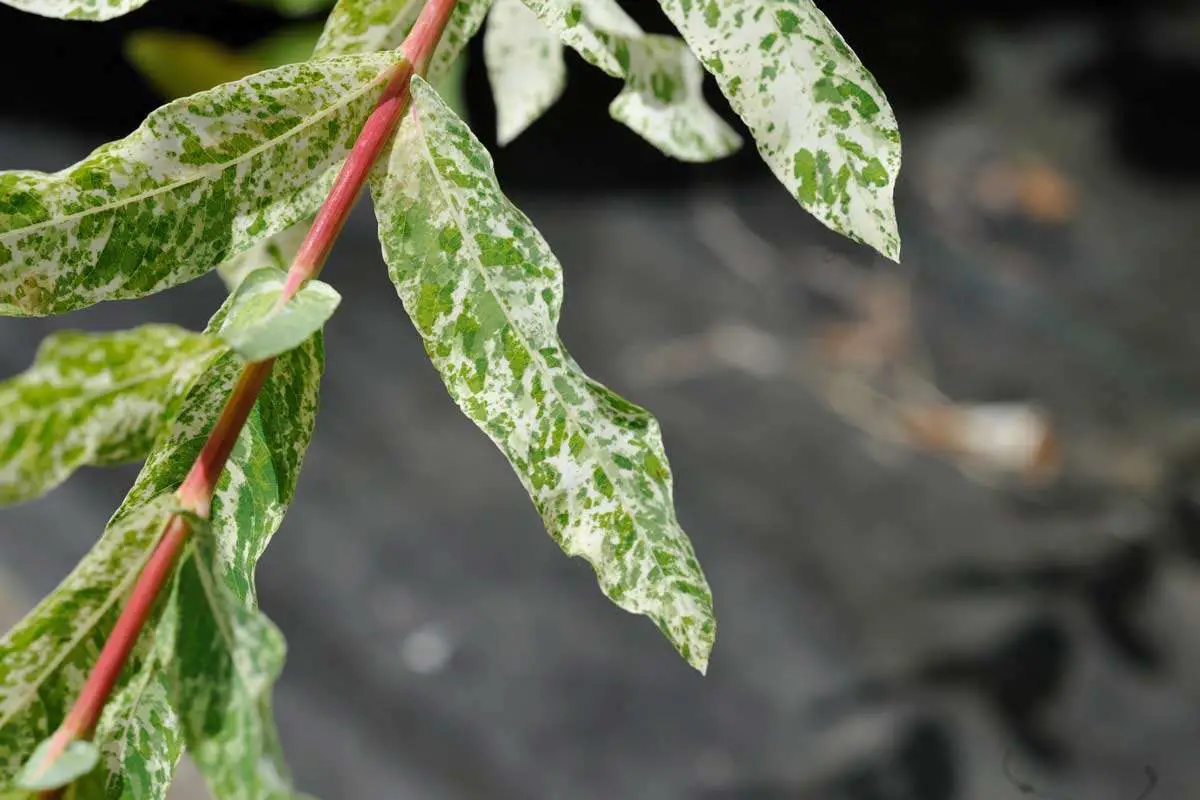
Due to the leaves being variegated with colors of pink, green, and white, this willow shrub works well as a specimen plant. Pink appears on the branches as the leaves initially emerge and fades to green and white as the season advances.
As an added benefit, the branches turn a lovely scarlet in the winter. It works nicely in shrub borders or rain gardens since it grows from several stems.
This plant is also known as the variegated willow, Nishiki willow, Japanese dappled willow, Japanese variegated willow, and tri-colour willow. Usually different names are more common in different areas of the country.
The willow is also known by the variation name ‘Albomaculata.’ Another interesting trait is that this particular species is very similar in its patterns to the Salix integra ‘Flamingo’. The Salix integra Flamingo is another willow tree species.
5. Goat Willow (Salix Caprea)
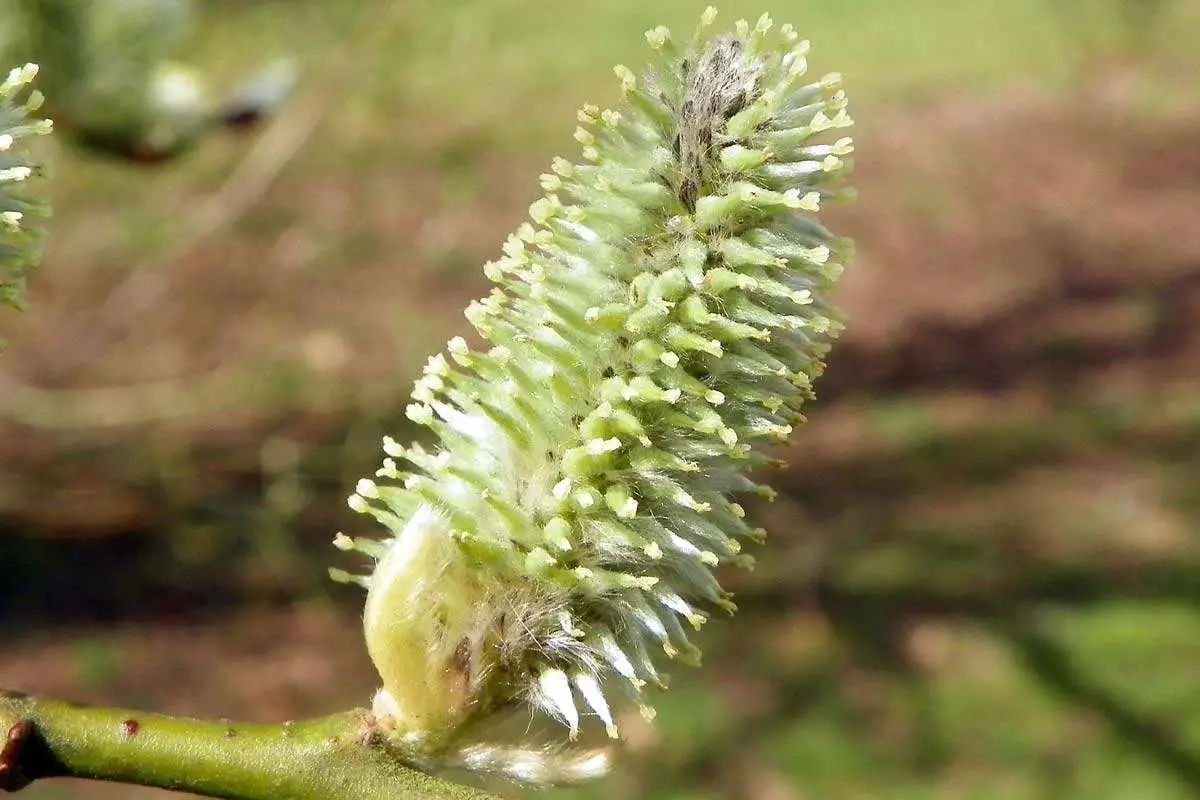
Goat willow is one of numerous willow species known colloquially as pussy willow. Goat willow may range from being a big shrub to a small tree. It is often planted for its beautiful puffy catkins. It is sometimes used for hedges and screens, or as a filler plant in swampy places when kept carefully clipped.
The goat willow is one of the few willow species that does not spread effectively from cuttings of branches. This is the reason that for pollination and seed generation to occur both a male and female plants are required.
Other popular names for this plant, in addition to pussy willow, are great sallow, European pussy willow, and French pussy willow.
6. Peach-Leaf Willow (Salix Amygdaloides)
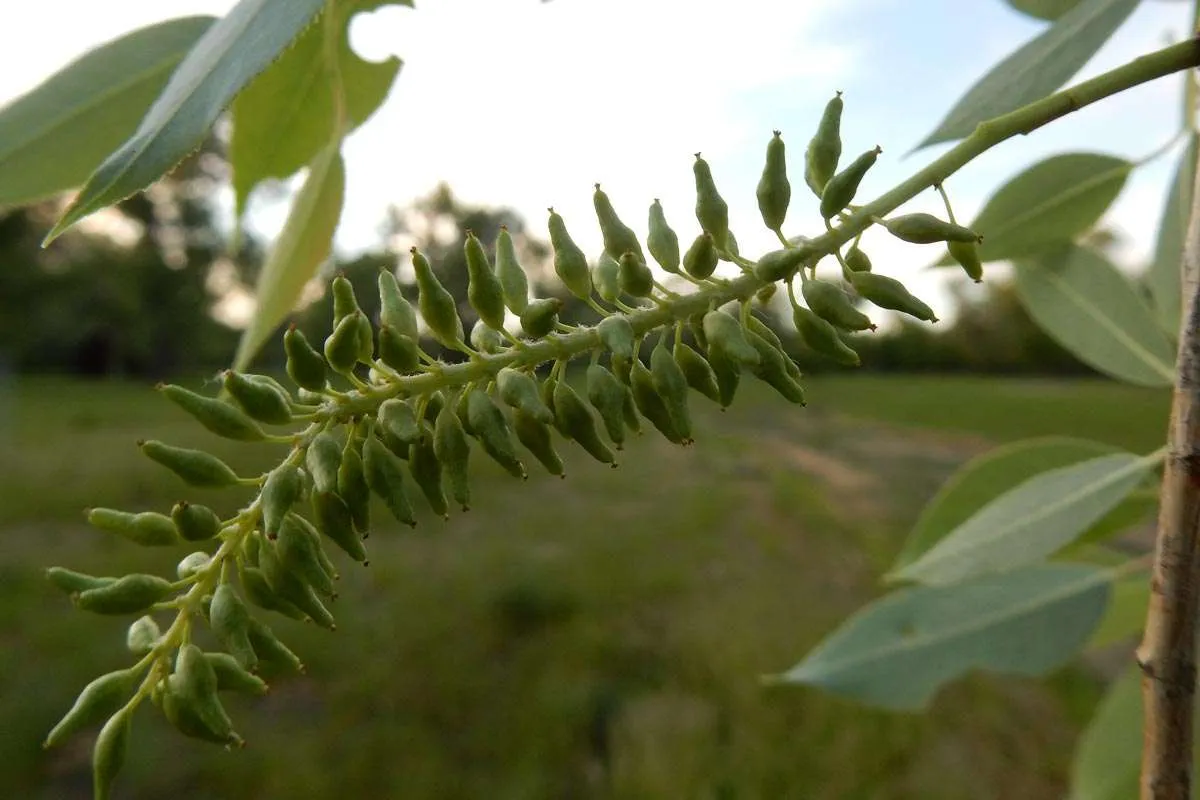
The peach-leaf willow gets its popular name from quite obviously having leaves that resemble those of a peach tree. It is probably the characteristic feature used to identify the tree.
It is necessary to use seeds to propagate the tree’s growth since the cuttings seem to root quite poorly. That is if they root at all. The tree itself, once fully grown is quite frankly huge. However, it seldom ever lives long.
Peach leaf willow is often quite useful for rapidly filling barren areas and controlling erosion. This is partly due to the tree’s amazing growth speed. It is frequently found growing near cottonwood trees in natural environments.
This plant is also known as almond willow and Wright willow.
7. Pussy Willow (Salix Discolor)
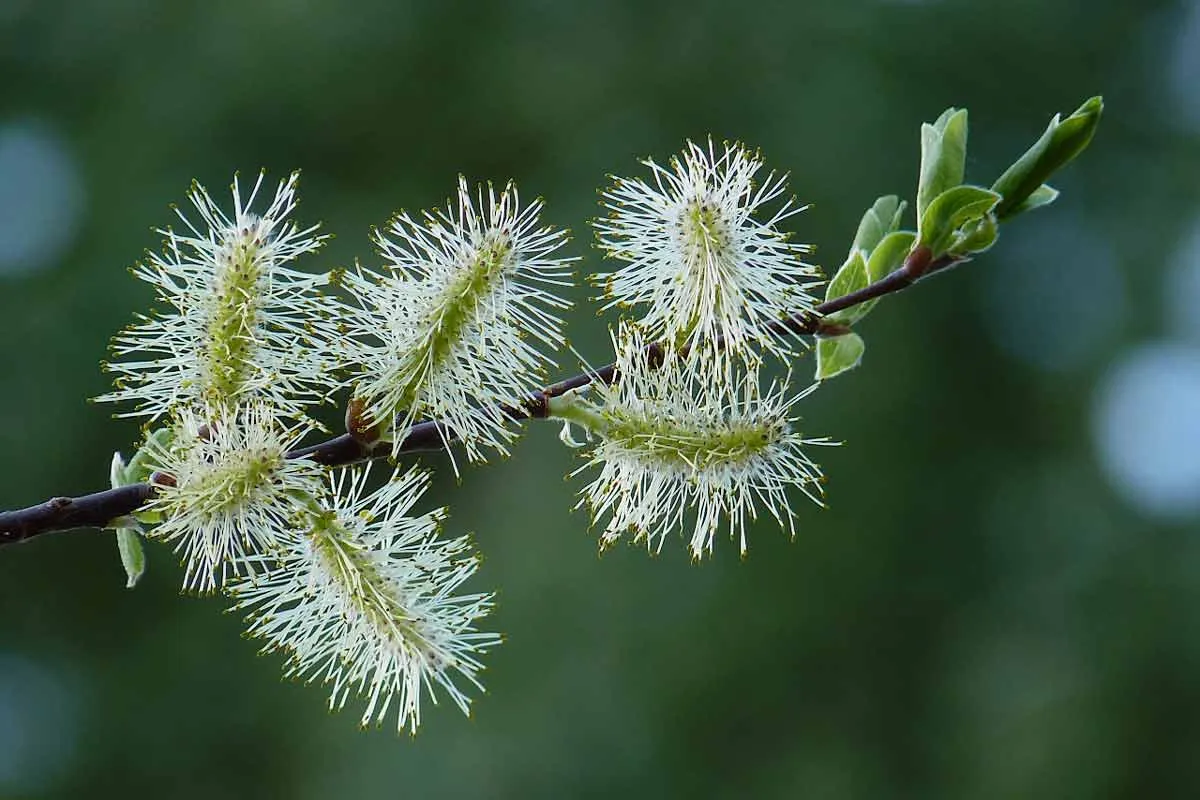
Along with the goat willow, this is the American willow species known colloquially as pussy willow. The pussy willow is often produced for use in floral design. It can be found in hedges and rain gardens throughout the landscape.
Salix discolor, unlike goat willow, which has many thicket-like stems sprouting from the ground, may be molded into a tiny tree or shrub with a central stem.
This plant is also known as American pussy willow, glaucous willow, giant pussy willow, and American willow.
8. Weeping Willow Tree (Salix Babylonica)
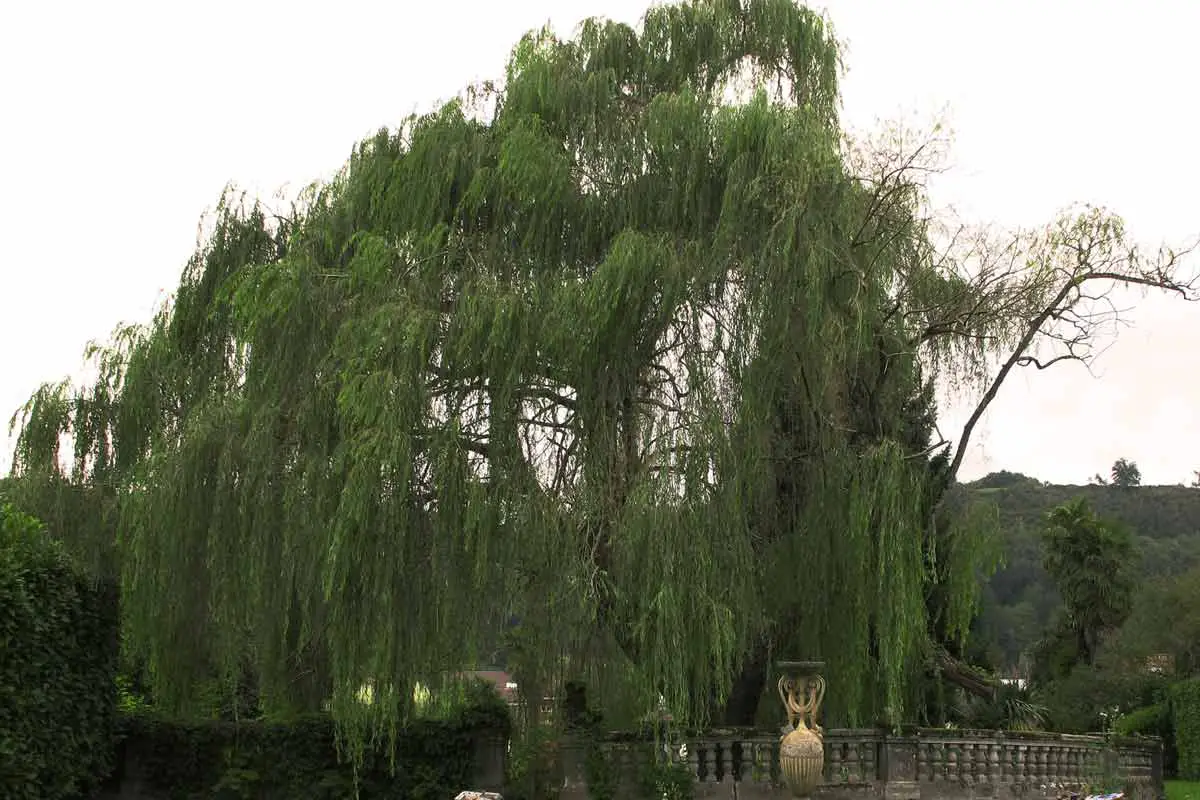
The weeping willow is certainly one of the most well-known weeping trees in the landscape. Moreover it is also definitely the most well known willow tree. It is probably not incorrect to say that the weeping willow is the tree that comes to mind when a willow tree is mentioned.
It works well as a pond or lake side plant, but it may also be planted as a landscaping specimen tree in bigger yards. The branches will wave in the breeze, however heavier gusts may snap off parts of the stems or full branches and scatter them on the ground.
Weeping willows are short-lived and will need to be replaced in roughly 30 years. However, once it grows to full size, it may add up to 10 feet every year.
9. White Willow (Salix Alba)
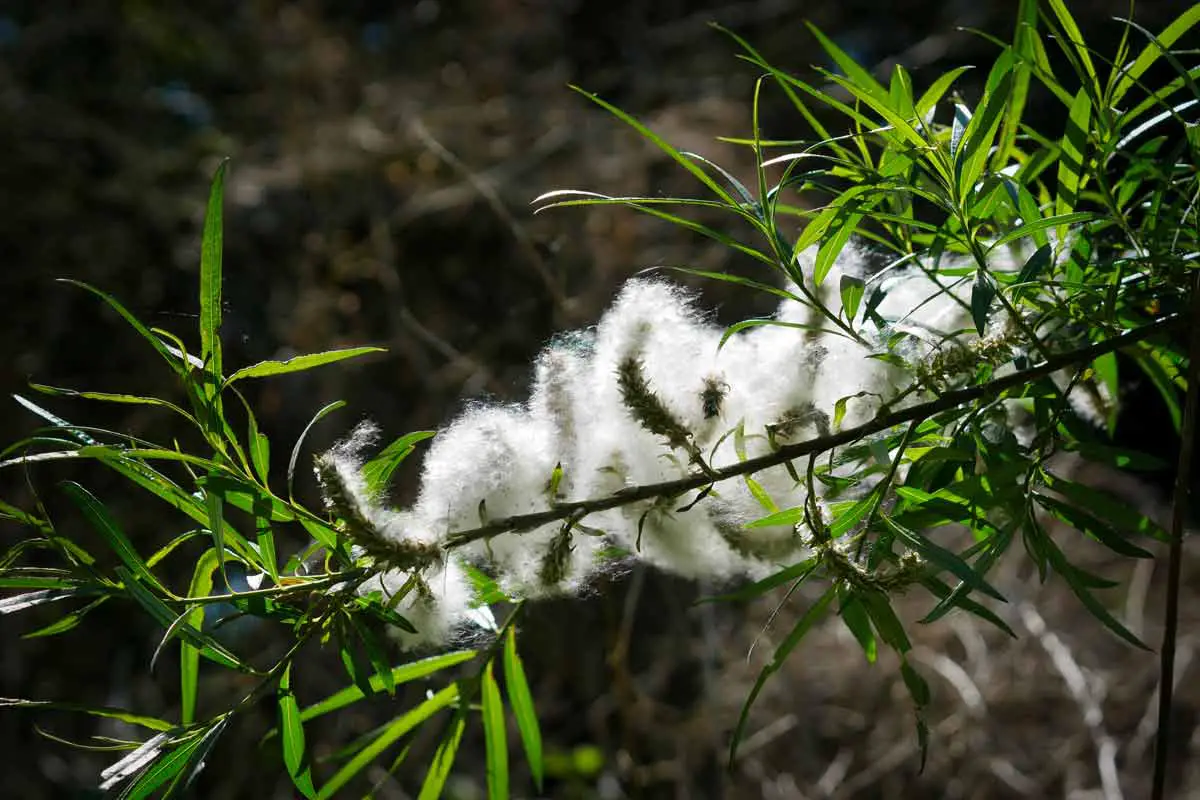
The white willow tree gets its name from the fact that the leaves are white underneath. Fungi that cause the diamond willow feature can sometimes infect white willow also. Due to the poor wood quality and vast size possessed by this tree, it is not considered a useful species.
It’s vast size makes sure it will take too much space and the poor quality of the wood makes it a terrible choice for any landscaping. Though the uses for this tree are scarce to none, it is still sometimes used to fill up low moist regions.
This is perhaps the only widely known use of this tree in the United States. However, a variety of the tree, the Salix Alba Tristis is often marketed as a golden weeping tree.
White willow’s often planted for its beauty, though a large amount of space is required to actually grow this tree. This is because the tree grows rapidly and uses a lot of space.
Basket weaving is probably the only commercial activity that makes use of the extensive stems in the tree.
10. Downy Willow (Salix Lapponum)
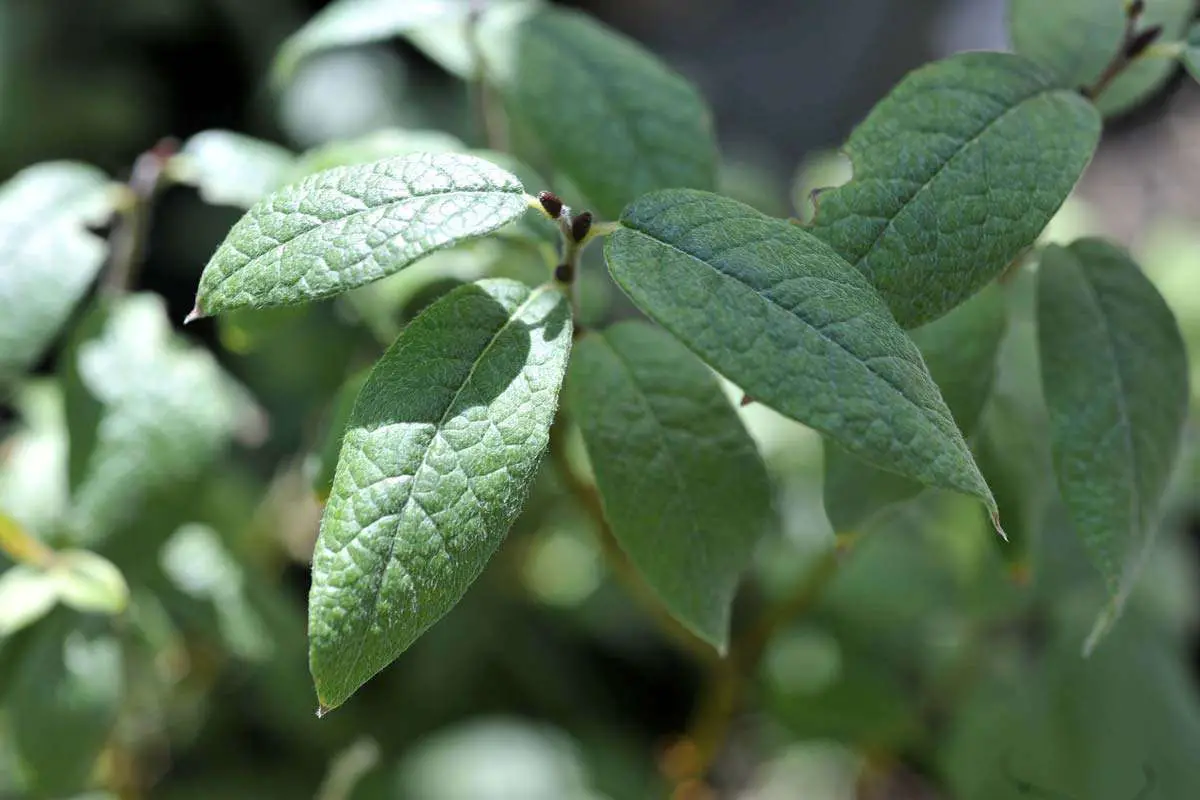
This willow is endemic to Northern Europe and Asia; the name lapponum refers to Lapland, which is located in northern Scandinavia. It grows natively in alpine places such as Scandinavia and the Arctic Circle.
Downy willow thrives on sandy and rocky soils and grows best in Zones 3-7. It tolerates deer and may thrive among black walnut trees. It can also handle most well-draining soils, as well as poor soil conditions. It grows 3-5 feet tall and broad and has silver catkins in the spring.




